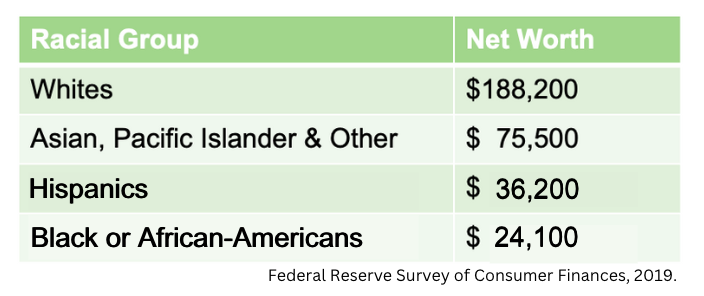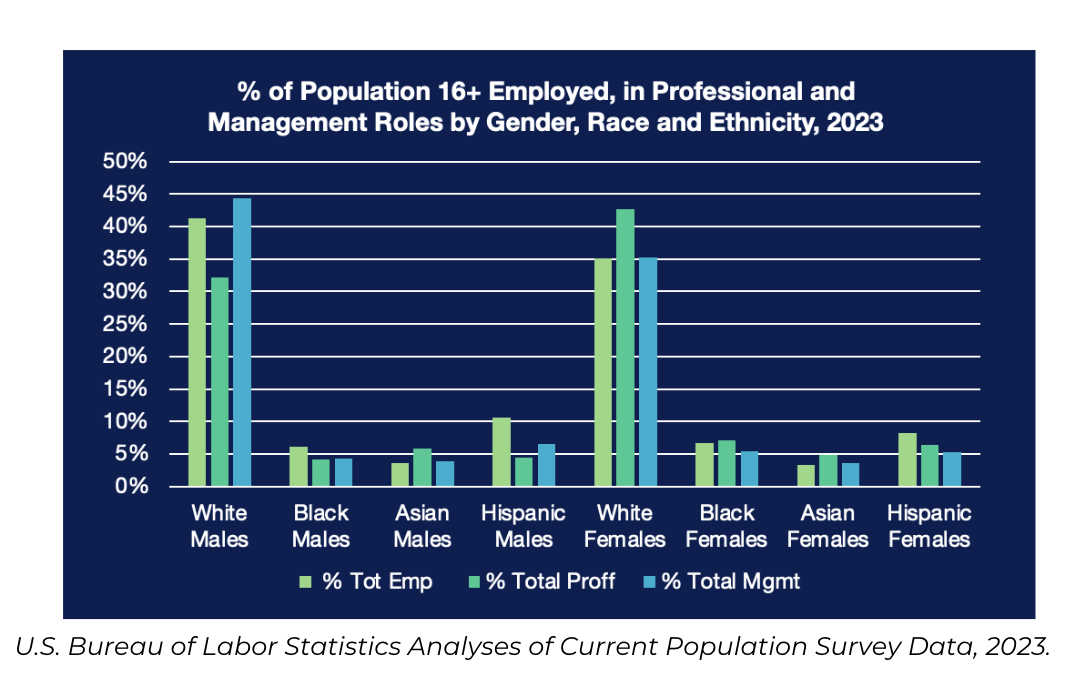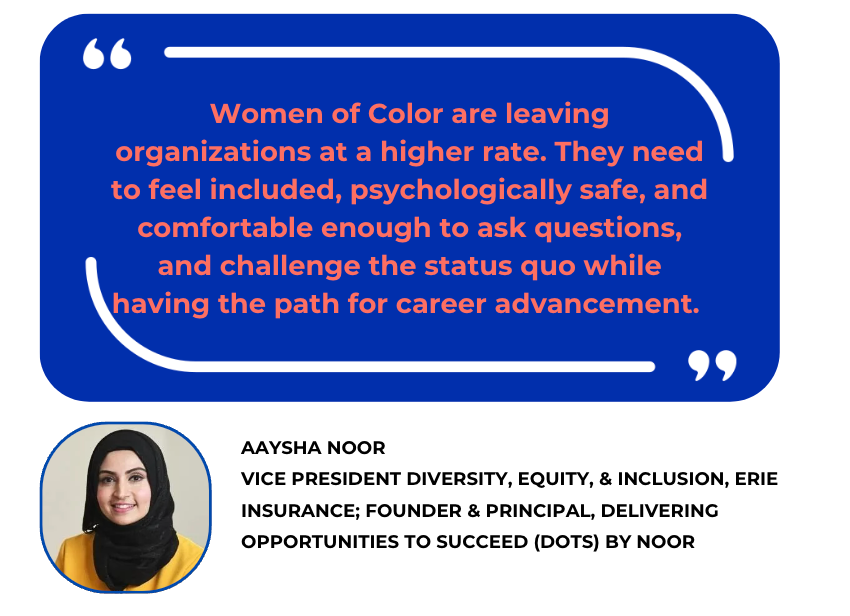WBC crafted this Briefing with the support and help of our Steering Committee who helped to review and analyze over 60 reports from both business and academic sources, many of which collaborate with Women Business Collaborative (WBC). Our analysis revealed a significant gap in specific data regarding the different races and ethnicities included under the WOC category.
The Briefing encourages corporations to more vigorously focus on attracting, retaining, and promoting WOC. By doing so, companies increase business performance from employee engagement to profits.
This is a summary. Download the full briefing here.
Main Objectives
- To cast light on the very real issues that Black, Asian, Latina, Indigenous and all Women of Color (WOC) face individually and collectively as they work to forge the careers of their choice.
- To provide facts, figures, and findings that both pinpoint problems and suggest solutions on how organizations can profit from true diversity.
- To encourage and motivate corporate leadership to embrace initiatives and strategies that address the specific challenges and opportunities of various racial and ethnic groups that comprise WOC.

attracting women of color
In many ways the current system is stacked against WOC, and that inequity “begins at the very beginning.” If the gaps in representation at middle and upper levels of management, in pay, in inclusion and in acceptance are to be closed, the place to start is in attracting and hiring WOC across races and ethnicities.

promoting women of color
WOC of all races and ethnicities are largely excluded from managerial and leadership roles across industries, and the consequences to organizations are significant. According to a 2020 McKinsey report, companies in the bottom quartile in ethnic and cultural diversity underperform the top quartile with relation to profitability by 36%.

The Myth of Meritocracy
THE MYTH: Success is determined by individual achievement and not based on one’s inherited social status.
THE REALITY: Multiple factors contribute to an individual’s achievement and status including that: we do not all start out on equal footing. Systems of oppression inhibit marginalized populations from accessing resources that lead to health, wealth, power and privilege.

RETAINING WOMEN OF COLOR
Attracting, hiring, and promoting WOC across all races and ethnicities are significant contributors to improving corporate growth, profitability, and creativity. However, without sustainable approaches for retaining the talented WOC hired and promoted, organizations will not achieve the long-term successful outcomes for which they are hoping.
Three Strategies for Retaining Women of Color:
- Prove Women of Color Can – and Do – Advance
- Encourage Authenticity
- Provide Options for Flexible Work

where we need to go
The purpose of this Briefing is twofold: To pinpoint what we already know and understand about equity and inclusion in the workplace for Black, Asian, Latina and Indigenous women; and to look at where more needs to be done to ensure ALL who fall under the umbrella of WOC are treated equitably.
Lack of disaggregated data and research about the many underserved populations that comprise the WOC population continues to be a major barrier to truly equitable corporate cultures, working to the disadvantage of both the women themselves and corporate profitability.
As a result, a commitment by both profit and non-profit organizations to disaggregate data by gender, race, and ethnicity is critical. Corporations must then use the data to remove bias across all career inflection points: attracting and hiring WOC, promoting them and retaining them. And managers need to be held accountable for what the numbers reveal.
As we continue to conduct research and gather data by specific races and ethnicities, we must keep the work of equity and inclusion moving forward without interruption.
Action Items Checklist:
- Develop Metrics
- Continually Confront Unconscious Bias and Stereotypes
- Encourage Men and White Women to Step Up as Allies and Sponsors
- Start Early
- Combat Isolation, Foster Inclusive Cultures, and Encourage Authenticity
In conclusion
This Briefing will hopefully serve as an impetus for corporations to more aggressively focus on attracting, retaining, and promoting WOC. If they rise to that challenge, they will be benefitting both women of color and their bottom line. They will be helping ensure that the following goals set by WBC and our partners will become realities on or ahead of schedule:
- 15% of Fortune 500 and S&P 500 CEO roles are women by 2025 and 20% by 2030.
- Women constitute 20% of those being considered for CEO roles by 2025 and 30% by 2030.
- 10% of all women in the C-Suite are women of color by 2030.
- 8% and 17% of women occupying the C-Suite have substantial P&L responsibility by 2025 and 2030 respectively.
- 25% and 30% of candidates assessed for C-Suite roles are women by 2025 and 2030 respectively.
- Equal numbers of men and women receive detailed information on career paths leading to line management roles by 2025.
- 30% of the Fortune and S&P 500 and Russell 3000 board seats held by women by 2025 and 40% by 2030.
This is a summary. Download the full briefing here.


